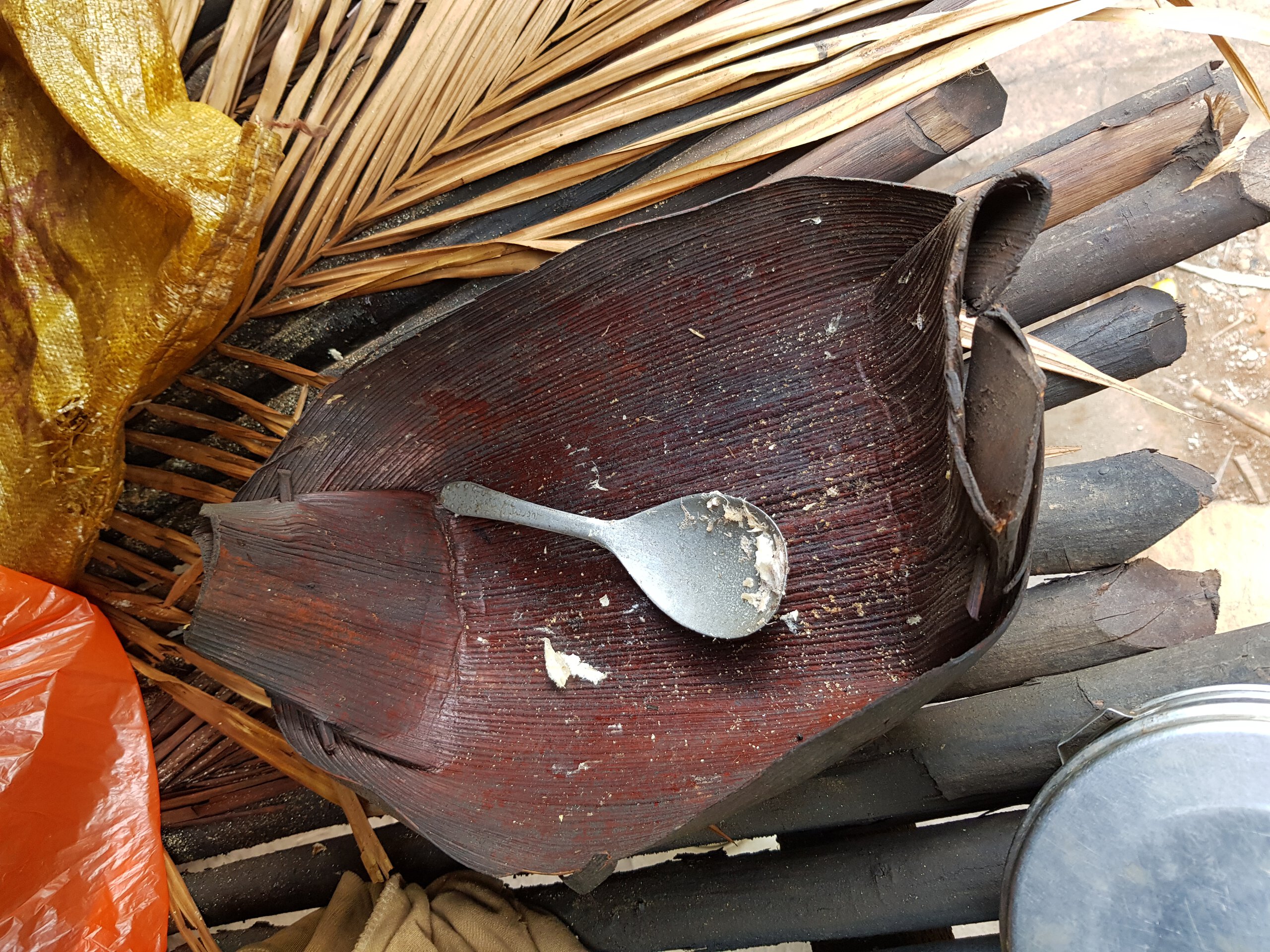The Togutil of Halmahera – North Maluku, Indonesia
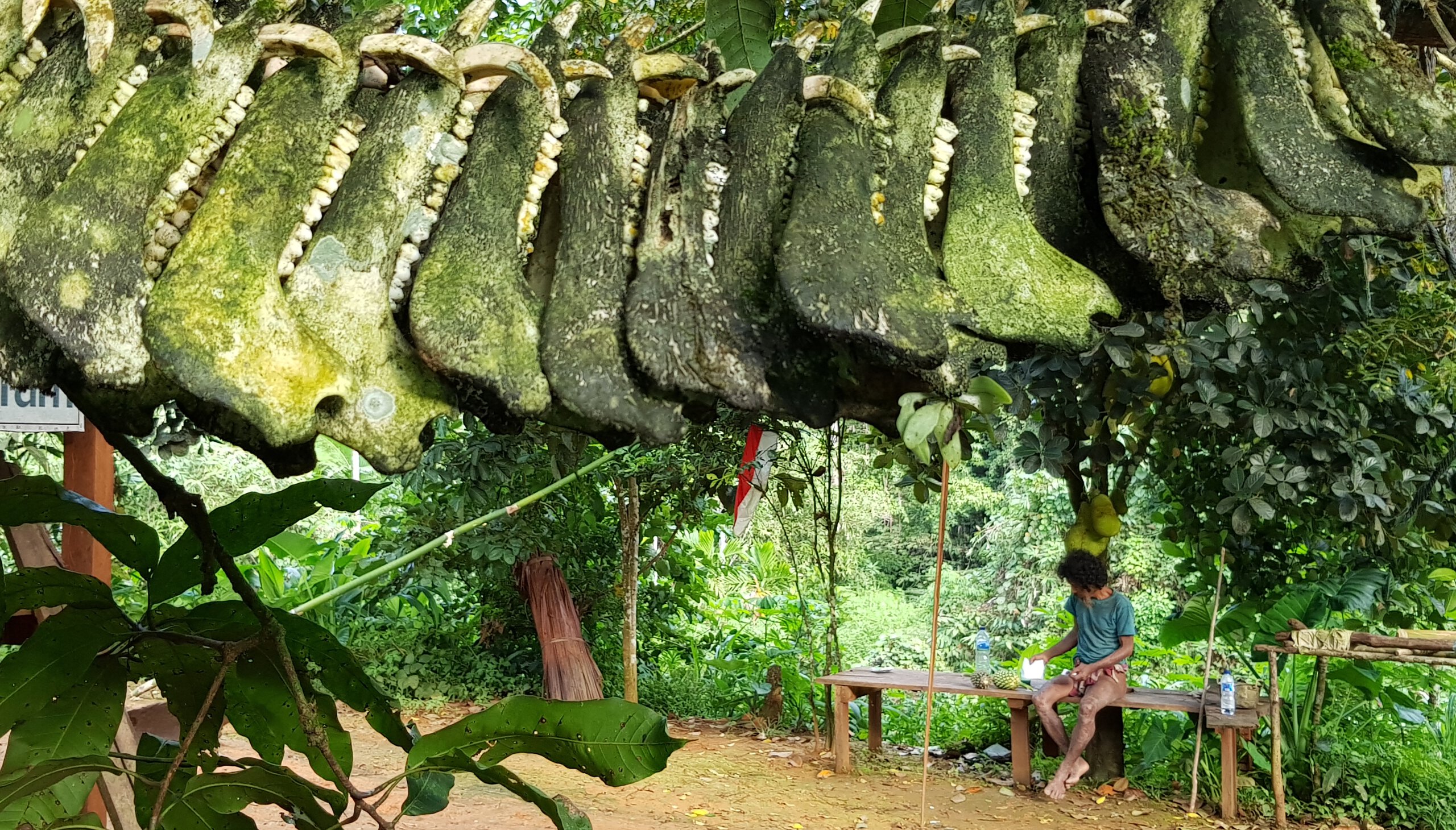
The Togutil people live in Central and North-Eastern Halmahera Island, the largest in North Maluku, Indonesia. They still move around in jungle barefoot hunting wild boars, caring little about the ‘civilized’ world around them. Some still wear just a loincloth, although T-shirts and other blessings of industrial production are becoming common. The Togutil live a semi-nomadic life: they have their small settlements, typically in a well-chosen place by a river, but if you decide to pay a surprise visit, be aware there could be nobody home for weeks in a row.
No Forest – No Life
The Togutil have been traditionally living off hunting and gathering mostly. Over generations, they have developed their own system of sustainable forest management, having a very detailed understanding of how much and when can you take from the forest you live in. Traditionally, each Togutil community had their own domain, and trespassing it by a stranger has been considered a major offense and could cause a violent action in the past. A domain being further divided into several areas, each serving its particular purpose. There are areas for food and medicine plants, areas for hunting, areas for living, and also taboo areas, that nobody is allowed to enter.
Each such area had a rather specific set of its dos and don’ts. Plants used for medicine, for instance, were supposed to be collected before sunrise, and only in necessary quantities. Hunting wild boars is permitted only outside the periods when newly born wild boars are breastfed. It is also prohibited to slaughter the pregnant female boars – this, it has been believed, would inflict a curse upon pregnant Togutil women.
The Togutil settlements are very small and typically consist of just a few families. I have been to two of them near the border of the Aketajawe Lolobata National Park. Both are very strategically located by a bend of a river providing fresh water to drink, fish and frogs to eat, and plenty of useful plants around. I cannot explain it rationally, but both places just felt very enjoyable to stay at. Or maybe, it was just a complete absence of mosquitoes, which are ubiquitous everywhere else on the island.
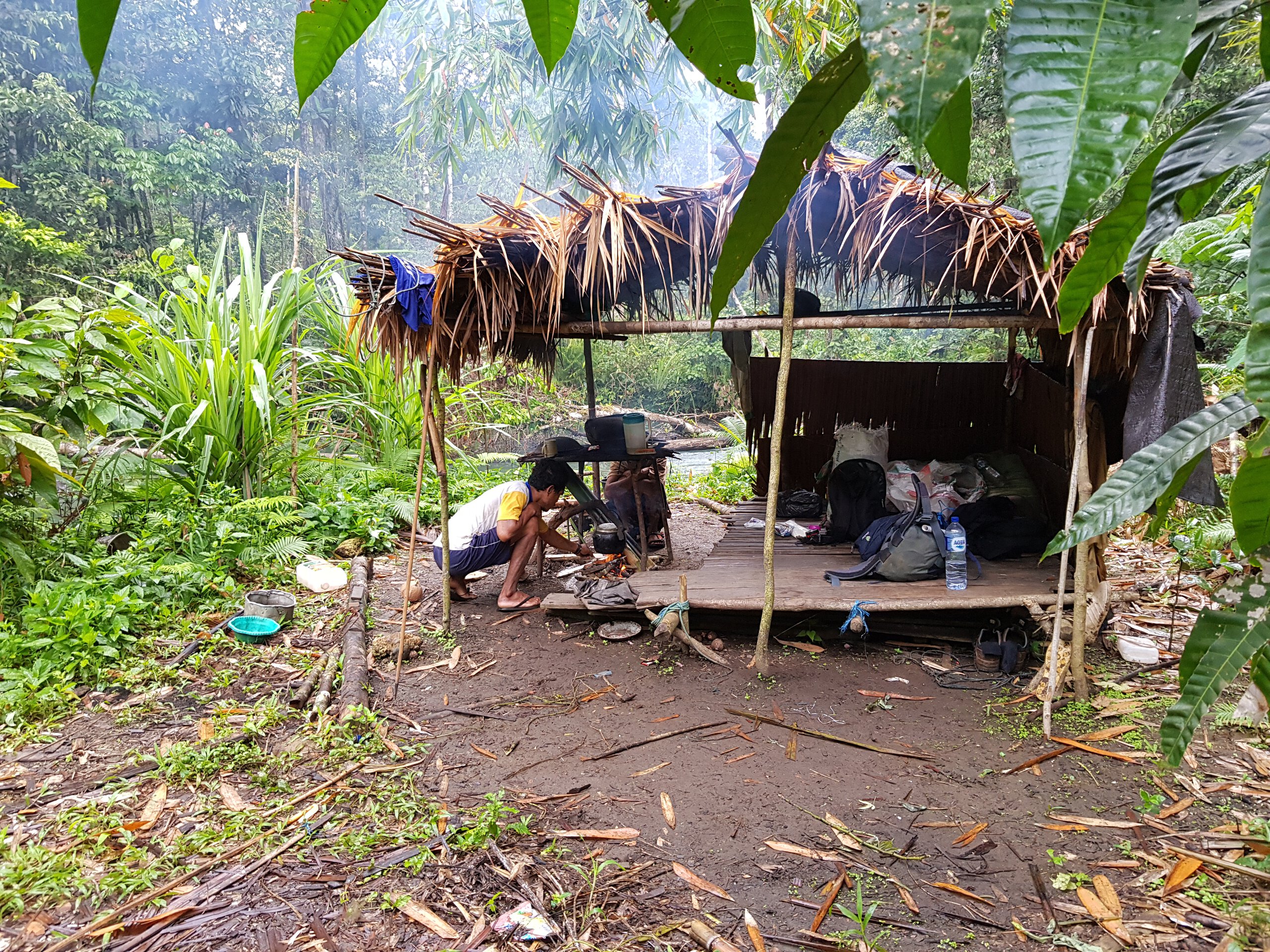
Befak, a Togutil house, is typically made of bamboo and is covered with palm leaves for a roof. The walls, when present at all, are also made of stitched palm leaves. A typical attribute of a Togutil household is a collection of trophy jaws of babi hutan, wild boars, hanging on a liana near the house.
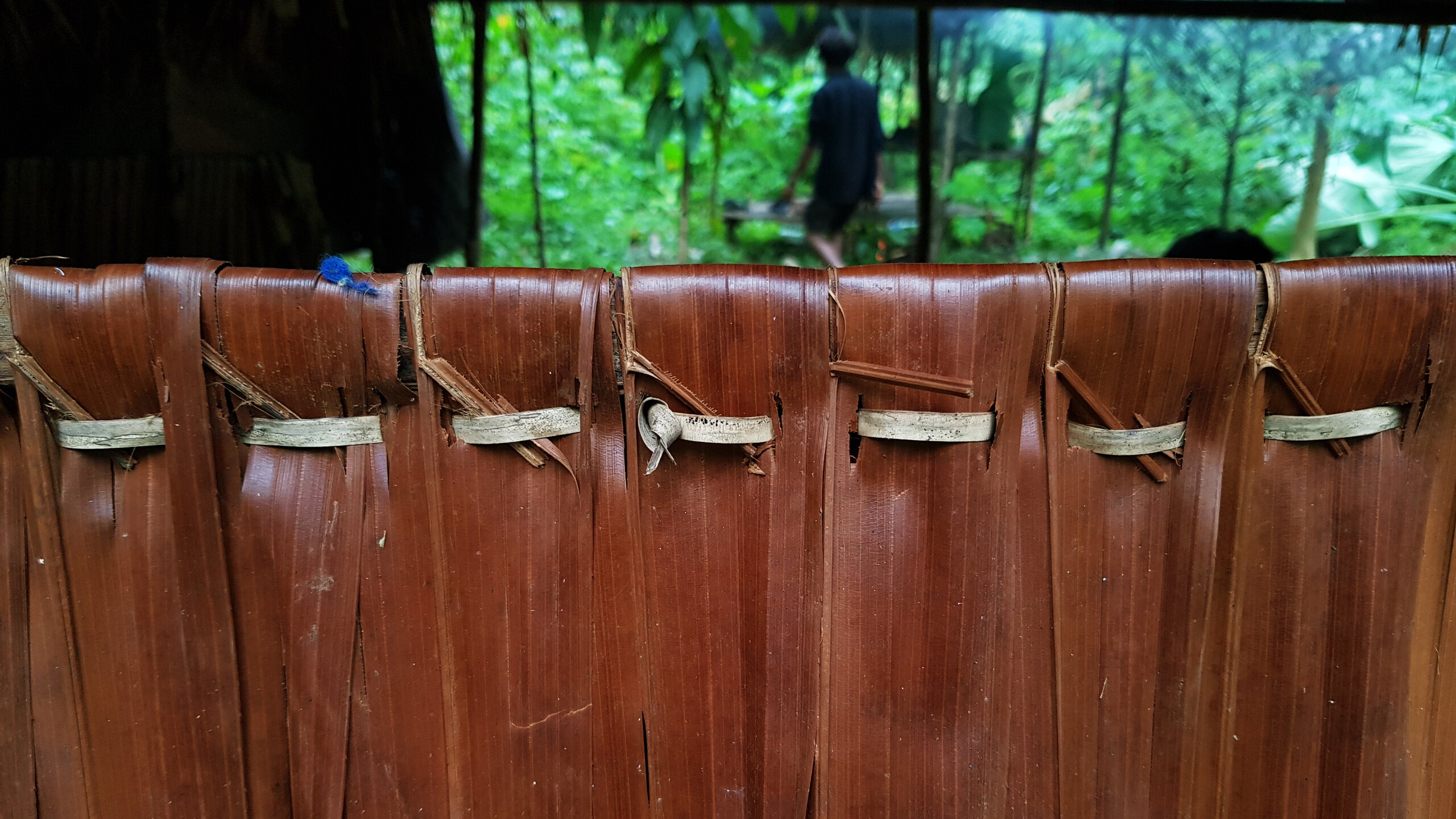
The Legendary Lingon Tribe
When visiting Halmahera, you will probably hear about another tribe, that has allegedly lived (or, some believe, still lives) in Halmaheran jungles – the legendary Lingons, who have appearance of white/Caucasian race: tall, blond, blue-eyed, and very mean, of course. As the ‘mainstream’ legend has it, the Lingons were descendants of the survivors from a Portuguese ship capsized near Halmahera, who, while struggling for their survival, have gradually become a primitive tribe. There is no evidence that the Lingon have ever existed.
Getting There
For the most authentic experience, you should take a car to Subaim. In 2019, the cost was 150K IDR, roughly equivalent to 10 euros. In Subaim, there is at least one Togutil family, who abandoned the forest and is living there. There is also a ‘guide’ named Ryan, who organizes the hikes to the Togutil settlement. Subaim is a small place, so just ask around. Or, better still, go to the head office of Aketajawe Lolobata National Park in Sofifi, and they will readily advise you. I’ve visited them on December 24, and still got my trip arranged in a matter of a few WhatsApp messages exchanged between the park ranger and the guide. Next morning we were already walking uphill into the jungle.
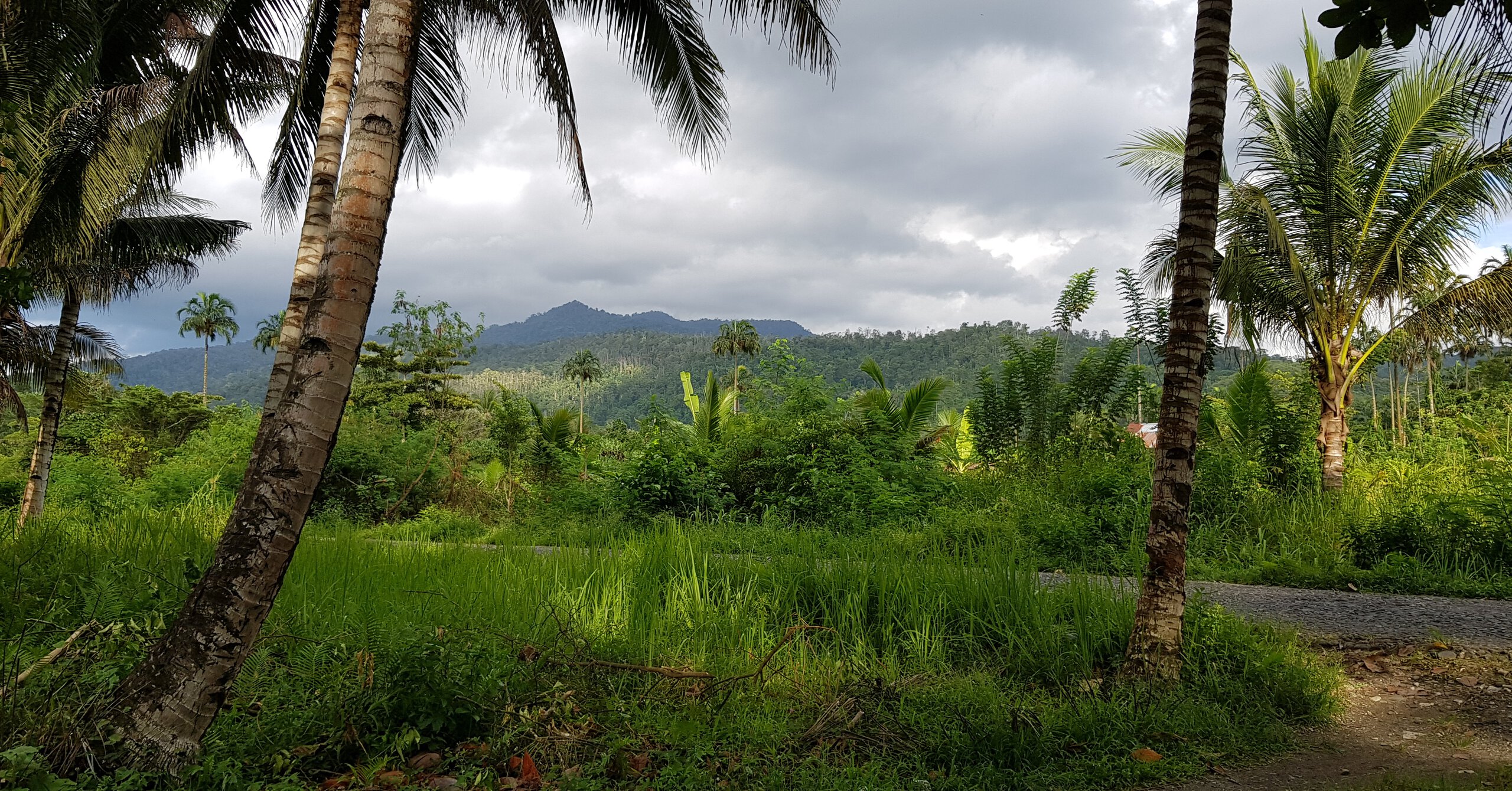
Our goal was a place identified by Google Maps as Kakaraino. It’s about 15 km from our starting point out of Subaim as a crow flies. In theory, the whole route could be covered in a single day, if you start at dawn, but we didn’t due to all kind of disputes between the ‘guide’ and the ‘porter’. The real guide was actually the latter, a young Togutil who knows the jungle like a back of his hand, despite living in Subaim village. The guide, on the other hand, is only a middleman and isn’t neither experienced nor well equipped.
The other slowing factor was my lack of any previous jungle hiking experience. I’ve got used to it in a couple of days, but at the beginning I felt really clumsy, stepping into all wrong places, tangling myself into everything with thorns, and so on. Pretty quickly I realized my hiking shoes were of little use. The Vibram soles get filled with sticky clay in a matter of minutes, and then you just skid like a sledge. Water sports sandals are much better, as there are quite a few small rivers to wade. The best are rubber shoes the locals wear, as these have more suitable soles. Alas, they are not available for my foot size.
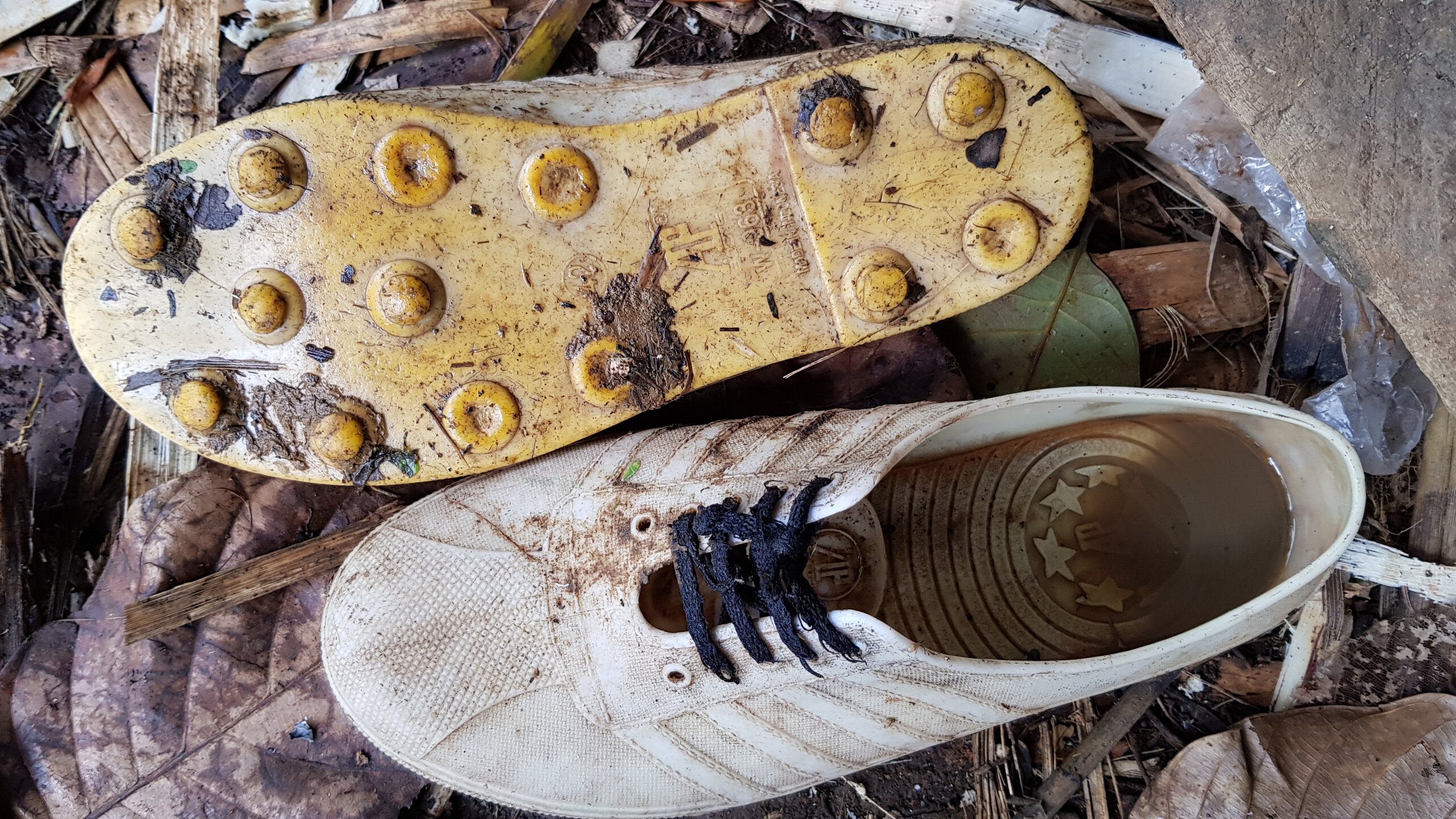
Our first stop was in an abandoned befak. This formerly belonged to the head of the family who provided us with a porter. We met two young fellows there, about ten-twelve years old, who were hunting together. One was from the forest, another was from the village. We had our supper of frogs, pineapples and ‘bamboo rice’. Before the next day’s noon we reached the house of Pak Pojiji.
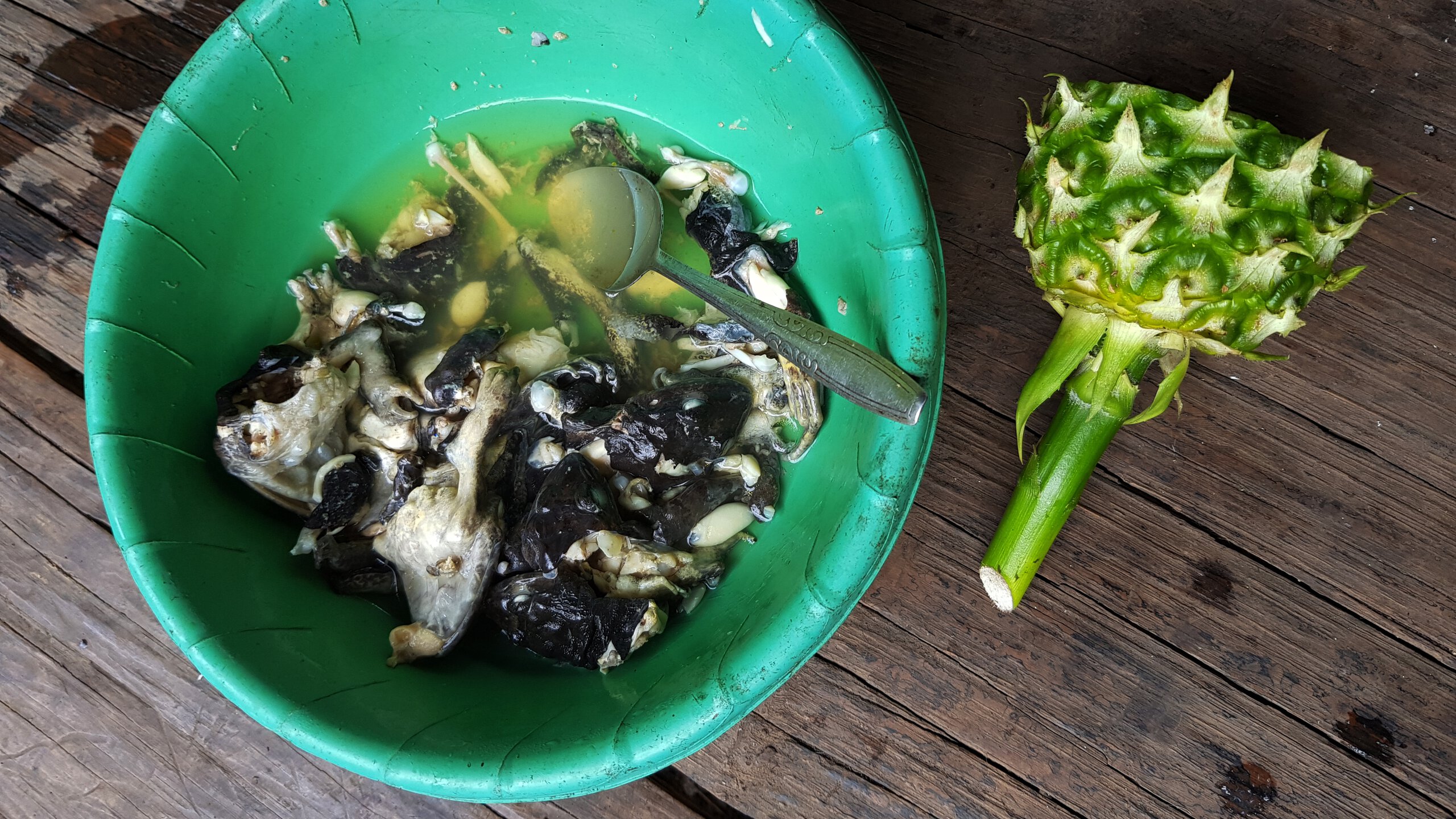
The House of Pojiji
Pak Pojiji is the oldest person in the settlement. He is an experienced hunter (judging by the amount of boars’ jaws hanging around on his premises), and not very talkative. Probably, the language barrier took its toll: my basic Indonesian was of little use here, as the Togutil speak their own language, and, at least in remote places like the one we visited, they do not speak Indonesian. Pojiji has accepted a bag of rice and instant noodles we’ve brought for him without any sign of emotion whatsoever, posed for a few pictures, and showed no further sign of interest in his guests, as if saying: “You came to observe my life – well, observe, then.”
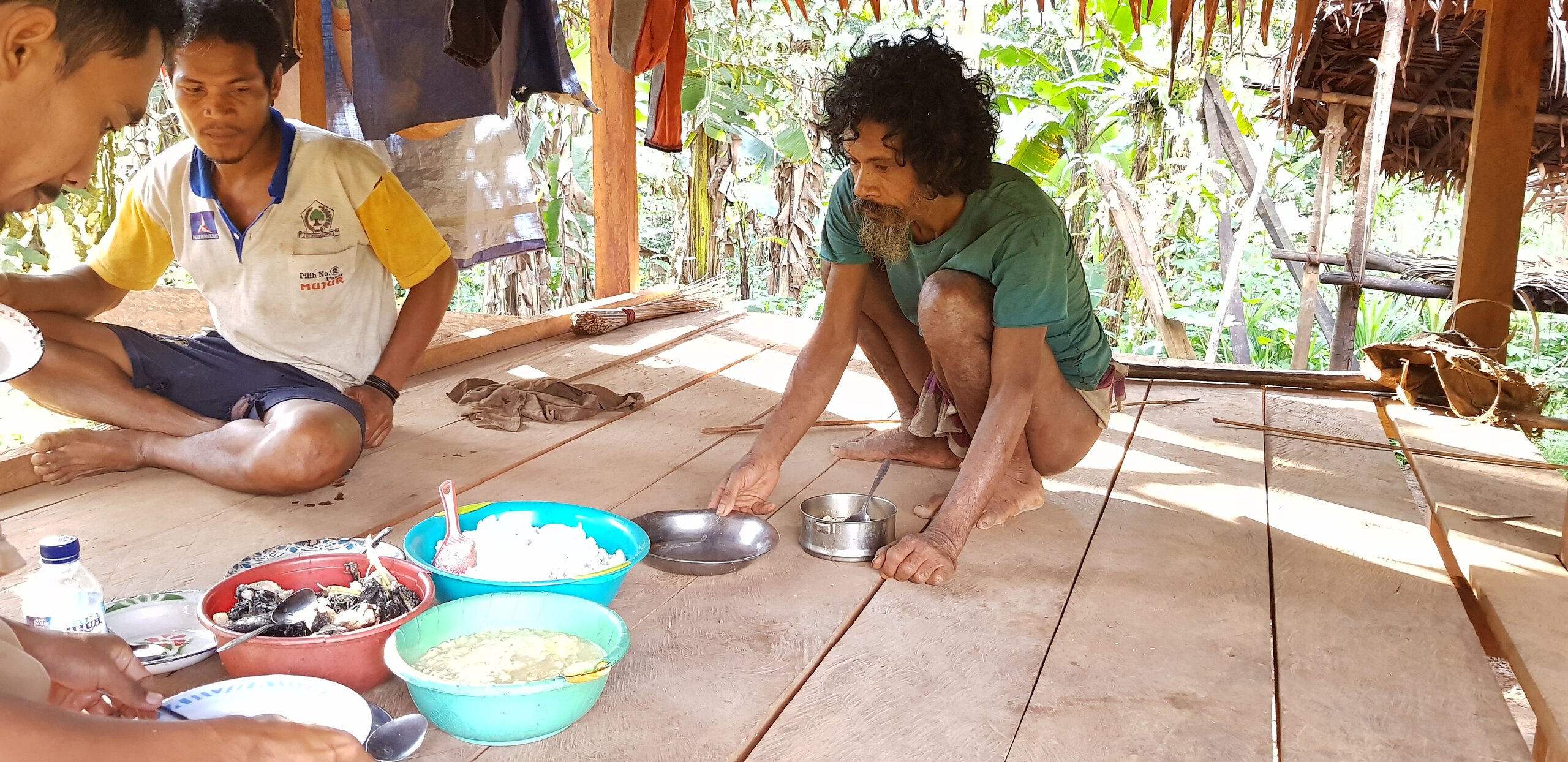
By Togutil measure, the house of Pojiji is a king’s palace. It was built for him by Antam, a company mining nickel in his land, as a preventive friendly gesture. The traditional style has been respected, though in the past the Togutil never fell a tree for building a house. The settlement is located on a top of a small hill by a bend of a river. Apart from Pojiji, there are two more families in this place, but they were out in the forest during my brief stay.
I have stayed at Pojiji place for another day, making a jungle trip to a tall sharp cliff called Batu Babua. The next day early morning we were on our way back to Subaim. My ‘jungle skills’ have apparently improved somewhat, and this time we made it to Subaim the same day before the sunset.
The Future of the Togutil People
The Earth’s population grows at a breathtaking speed – there are more people living on the planet now than have ever died through the entire history of humanity – and even the Togutil cannot escape the implications. Mining, palm oil and forestry businesses are all eyeing their land, and the traditional Togutil way of life requires quite a lot of it. The protective attitude along the fact that the Togutil speak their own, quite distinct, language, doesn’t make the communication with the rest of the island’s population any easier, and there were a few clashes in the past. The last incident, that has created quite a stir in the local media , took place in 2015, when two Togutil men called Bokum and Nuhu were arrested suspected of murders that took place in the forest.
The assimilation of the Togutil seems to be imminent, as there are not too many options to preserve their traditional way of life. In the central, more accessible part of Halmahera, this has already happened: the Togutil will pose for rare tourists with their spears and bows, when asked for, but that would be it. The more remote areas around the national park are better protected, but sooner or later each Togutil will get a smartphone and a pair of shorts with pockets to carry it around.
Should You Decide to Pay the Togutil a Visit…
If you’ve read the article, you should already have an idea of dos and don’ts, but just in case…
- Don’t go on your own, arrange a guide instead. The Togutil can be very protective about their land, and do not seem to like surprise guests on average. Having a guide means there exists some sort of arrangement for such visits.
- The ‘arrangement’ in my case was that a visitor brings a substantial amount of food that Togutil people like. It is easy to please their taste, just buy a lot of rice and instant noodles. Please, do not buy cigarettes. Though it is indeed a very welcome commodity, keep in mind that at least part of them will end up in hands of children who are sometimes less than 10 years old.
- The Togutil of the forest do not speak Indonesian, and at least my guide almost didn’t speak any English. Luckily, I was clever enough to take online Skype lessons in Bahasa Indonesia for a few months before my trip. If I wouldn’t, I would have been facing a double language barrier.
- Use good hiking sandals made of synthetic material – the ones that can stand being wet all day long. You will be crossing small creeks and rivers so often, that taking boots off and then putting them on won’t make much sense.
- Having a good hammock with a tarp and mosquito net is the best option when it comes to camping in jungle.
- Buy yourself a parang, a big machete-like knife. They are sold everywhere in Subaim. This would come quite handy on the trip.
I think a trip to the Togutil settlement that I took would be an ideal adventure for a twelve-year-old boy. It is not challenging, but there are so many amusing things to see. No school textbook can substitute such an experience.
